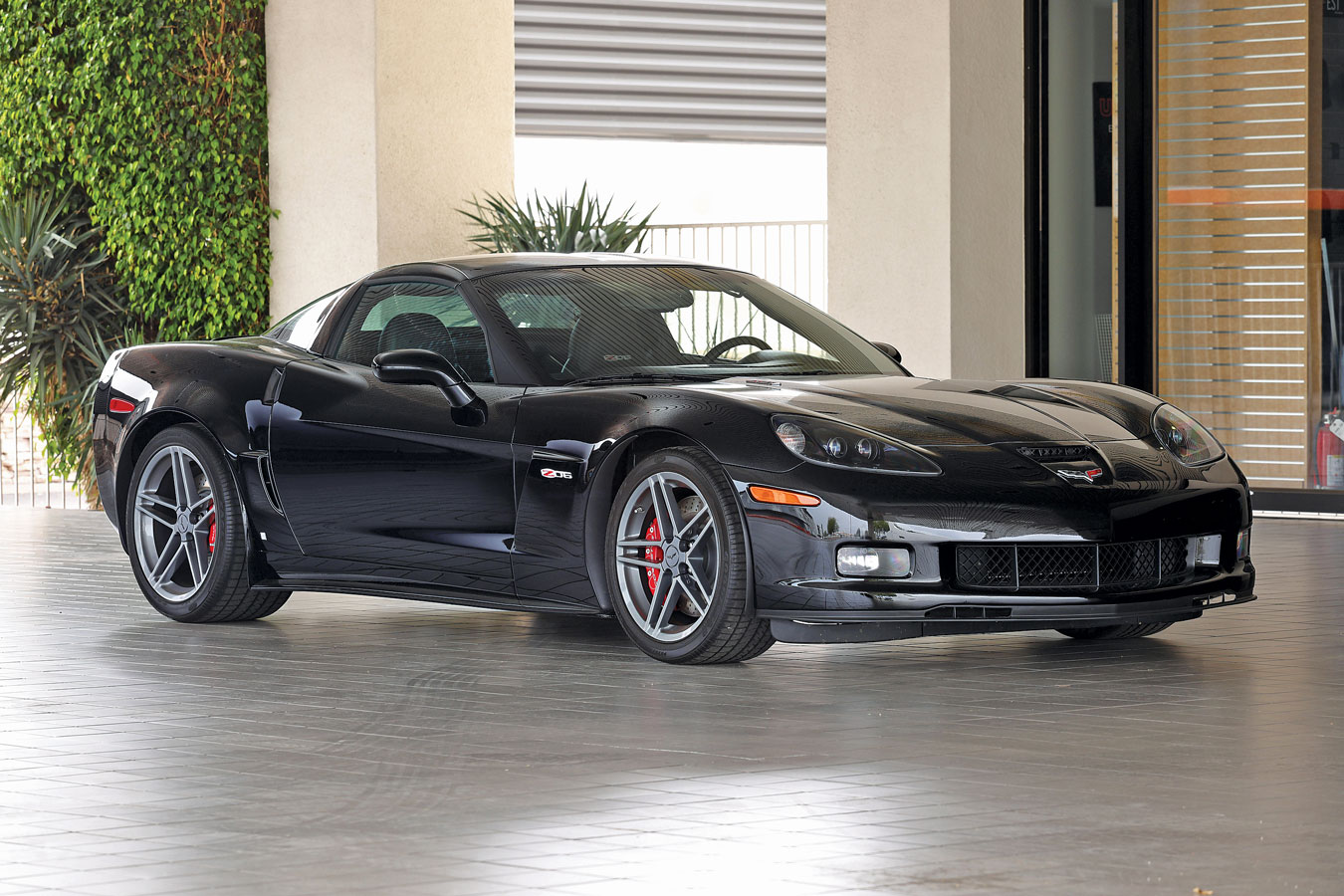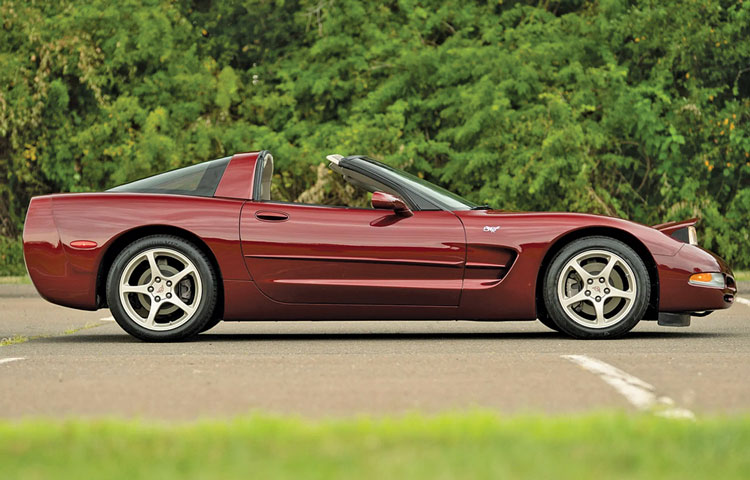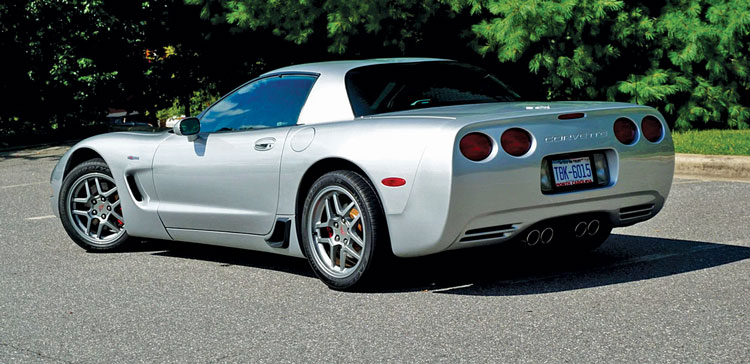
Rip Van Winkle wasn’t a car guy, but if he had been, his longform napping would’ve put him in good stead as a collector. By most reckoning, new cars depreciate for the first decade or two of life, then after they’ve bottomed out for a while, they start to climb in value — assuming, of course, that they have redeeming qualities such as design, performance, engineering, or historical context.
In Washington Irving’s 1819 story, Rip’s slumber was actually 20 years, which in the Corvette world puts us smack in the middle of the fifth-generation 1997–2004 model. This was the first entirely modern Corvette, succeeded by the similar C6 from 2005 to ’13. Which begs the question: Is now a good time to buy one?
Most of these cars are either at or near the bottom of their depreciation curves, where we can expect them to remain for a while yet. The preceding ’Vette generation, the C4, has yet to really catch on — even nearly four decades after that platform debuted for 1984. But the C5 and C6 are still new enough to be relatively safe collector cars, largely trouble-free and widely serviceable as daily drivers, GT steeds, autocross or track-day weapons, and amiable Sunday drivers.

Some are better than others
But which one to get? Your personal tastes and driving preferences should be paramount. But down the road, that always hoped-for appreciation depends on picking the right year, model and color, along with engine, transmission, suspension and options, mileage and condition.
As a youngster, I can remember my father saying, “The best indicator of future performance is past performance.” In the Corvette world, what this means is that special models, notably most anything with a Z in it (Z06, ZR1, Z51, et al.), are likely to outperform base models financially.
C5’s greatest hits
Let’s start with the reintroduction of a famous Corvette model during the C5 era, the 2002–04 Z06. When Chevrolet added a hard-top model for 1999, the idea was that this would be the entry-level Corvette, with a lower price than the removable-roof coupe. But the take-rate was abysmal, so Chevy hulked up the already-stiffer hard top to become the high-performance Z06. The name harkens back to the order code for the race-ready 1963 Corvette.
However, the aero properties of the hard-top body weren’t great, and for the C6 generation, the coupe became the Z06. This leaves three years of Z06 hard tops as wholly unique in 68 years of Corvette production. The C5 Z06 made 385 hp for 2001, but engineers upped this to 405 hp for 2002–04 — a high-water mark for Corvette decades after 1971’s last-hurrah 425-hp LS6. The SCM Median Valuation for C5 Z06 models is $21,500 to $24,500.
If a regular C5 is in your sights, it’s worth it to search for a later car, one of the 2003–04 models with the F55 Magnetic Selective Ride Control option. (C6 cars also had this option available.) This technology uses an electromagnetic field coil located on each suspension damper to quickly change the ferric-contented hydraulic fluid’s viscosity. Translation? With its onboard sensors and electronics, F55-equipped Corvettes can adjust their suspension damping at all four corners over just an inch of road at 60 mph. It was revolutionary, so much so that Ferrari later adopted it.

A new “King of the Hill”
The C6 Z06 (2006–13) was the shortest Corvette since 1957, with the first exposed headlamps since 1962, but its real claim to fame was its then-radical 505-hp engine. This jaw-dropping 100-pony bump from the C5 era was thanks to the amazing 7.0-liter LS7 V8. Accordingly, SCM median values for C6 Z06 models can double the price of the previous generation at $38,000 to $62,000.
GM didn’t stop there, introducing a new ZR1 for 2009, reviving the vaunted name for the second time (after the race-spec 1970–72 C3 ZR-1 and the 1990–95 C4 ZR-1, with its Lotus-designed DOHC, 32-valve, 5.7-liter engine). A supercharged 6.2-liter V8 rated at 638 hp peeked through a clear plastic panel in the ZR1’s hood, making it by far the most powerful Corvette ever offered. Also the most expensive, as the ZR1 MSRP was $105,000. But married to an aluminum chassis with a largely carbon-fiber body, its power-to-weight ratio was close to a Saturn V rocket. Prices have dropped, but not to credit-card-car levels, with SCM median values at $66,000 to $76,000.
No shortage of choices
Over nearly seven decades of Corvette production now, there are scores of models, RPOs (Regular Production Options), engines and transmissions to go with eight generations and a plethora of paint and interior choices. Americans crave Corvettes, and luckily for collectors, the sheer number of them built (more than 1.7 million so far, including 248,715 C5s and 212,573 C6s) means plenty exist from which to choose. Getting to know and understand the Corvette ecosystem before purchase will serve a buyer well in getting the right car. ♦